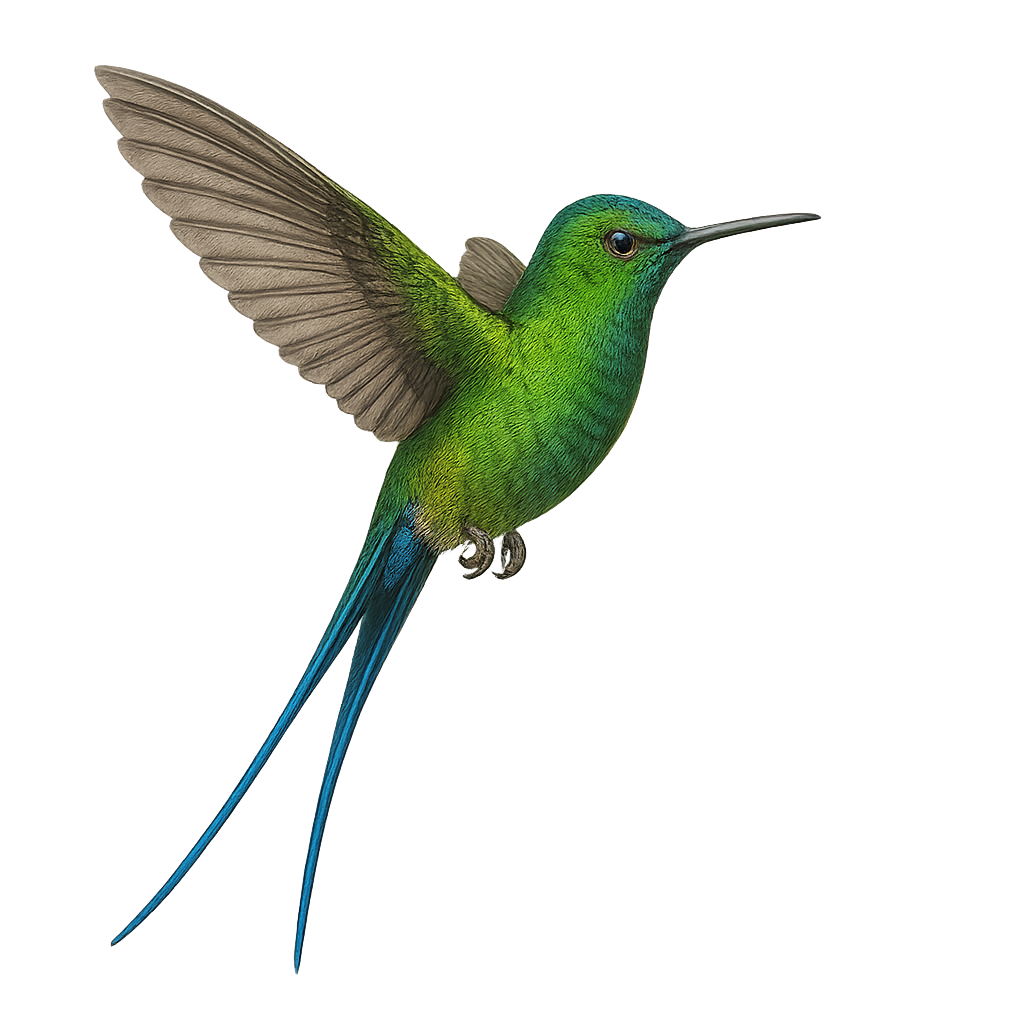Your wildlife photography guide.
Explore the long-tailed sylph in detail, study its behavior, prepare your shots.
Where to observe and photograph the long-tailed sylph in the wild
Learn where and when to spot the long-tailed sylph in the wild, how to identify the species based on distinctive features, and what natural environments it inhabits. The WildlifePhotographer app offers tailored photography tips that reflect the long-tailed sylph’s behavior, helping you capture better wildlife images. Explore the full species profile for key information including description, habitat, active periods, and approach techniques.
Long-tailed Sylph
Scientific name: Aglaiocercus kingii

IUCN Status: Least Concern
Family: TROCHILIDAE
Group: Birds
Sensitivity to human approach: Suspicious
Minimum approach distance: 5 m
Courtship display: March to April
Incubation: 16-18 jours
Hatchings: March to May
Habitat:
Humid forests, forest edges, mountainous areas
Activity period :
Primarily active during the day, with peak activity in the morning and late afternoon.
Identification and description:
The Long-tailed Sylph is a captivating hummingbird, easily recognized by its long, iridescent blue-green tail and vibrant plumage. It primarily inhabits the humid forests and forest edges of the Andes, where it feeds on nectar and insects. This hummingbird is a master of hovering flight, allowing it to feed efficiently from flowers. Males are particularly notable for their spectacular tails, used to attract females. Although generally solitary, this bird can be seen in small groups during the breeding season. Its song is a gentle chirping, often heard at dawn.
Recommended lens:
400 mm – adjust based on distance, desired framing (portrait or habitat), and approach conditions.
Photography tips:
To photograph the Long-tailed Sylph, use a telephoto lens of at least 400mm to capture the details of its iridescent plumage and long tail. Wait near the flowers it frequents to get shots in flight. Morning or late afternoon light is ideal to highlight the bird's vibrant colors. Make sure to keep a safe distance of 5m to avoid disturbing it. Use a fast shutter speed to freeze the rapid movement of its wings.
The WildlifePhotographer App is coming soon!
Be the first to explore the best nature spots, track rutting seasons, log your observations, and observe more wildlife.
Already 1 430 wildlife lovers subscribed worldwide

